几乎只要人round, we’ve come up with ways of preserving our food. Some of the oldest methods involved storing foods in boxes of salt, or submerging them in jars of honey. People in early civilizations also figured out that food lasts longer in a cold environment. After all, we’ve been keeping vegetables in root cellars for millennia. Then, in 1804, French confectioner Nicolas Appert invented canning. This revolutionized food storage, allowing meats and vegetables to be shipped throughout the world. The 20th century brought us home refrigerators and freezers, so we can store everything safely.
但是,如果您希望食物在冰箱中持续更长的时间怎么办?在这种情况下,真空食品密封剂是一个绝佳的选择。真空密封剂会将您的肉,蔬菜或其他食物包裹在贴心的塑料袋中。里面没有空气,您的食物将保持更长的时间。您还将降低冰箱燃烧的风险,因此您的肉会保持良好和嫩。当然,不仅有任何真空食品密封剂都可以。您需要一个用于您要存储的食物的工作。您需要它足够大以容纳最大的食物,并且足够强大,可以轻松操作。
Note: At no extra cost to you, we may earn a commission for purchases using our links.Learn more.
我们将要审查Omote真空食品密封剂。Omote是一家相对较新的制造商,专门从事较小的消费电子产品。我们最近审查了OMOTE Cordless Leaf Blower,而且价格和价格效果很好。因此,检查他们的真空密封剂并查看与竞争对手的比较是有意义的。我们将首先讨论一般的食物密封剂,以及您可以合理地期望的。接下来,我们将讨论Omote Sealer的物理设计,构造和配件。然后,我们将讨论它的使用方式以及您可以期望获得的结果。之后,我们将总结我们学到的知识,并移交我们的判决。让我们开始!
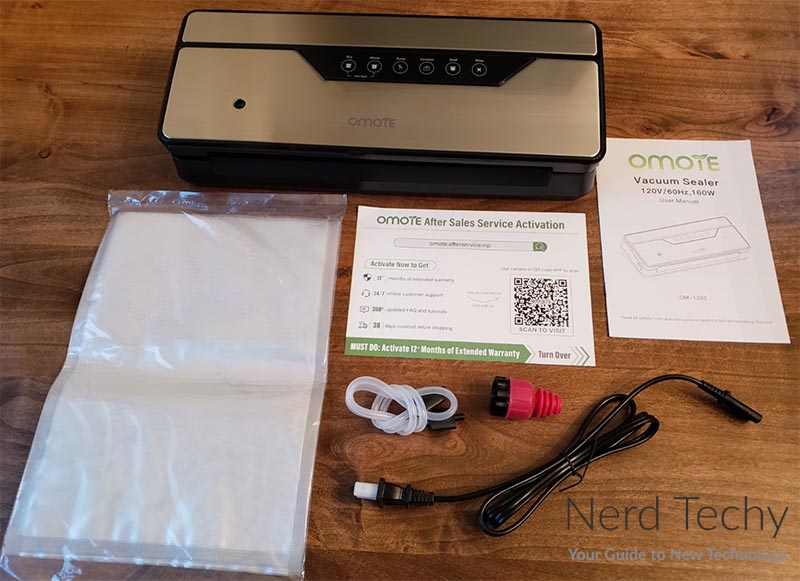
Vacuum Food Sealer Basics
Before we get to theOMOTE Vacuum Sealerin particular, let’s talk about the basics. What should you be looking for in a food sealer? First and foremost, consider what you’re using it for. If it’s for leftovers, individual cuts, or other small jobs, a small consumer model might be just fine. On the other hand, if you’re going hunting or sealing a garden’s worth of produce, that might not be enough. You might want to splurge on a commercial-grade food sealer that can run non-stop. Then, you can easily package a freezer’s worth of food for yoursous vide cooker.
Another thing to consider is what kind of accessories you get. Many food sealers don’t come with any bags, so you end up having to buy those separately. Some sealers also come with attachments for sealing bottles, jars, and cans. If you want to vacuum seal more than just a bag, look for a sealer with those types of accessories.
Of course, the physical design is also a concern. You need to consider how you’re going to store your vacuum sealer. If you don’t have enough space, you’ll have to look for a smaller sealer. Along the same lines, look at whether it can be stored vertically or on its side. Check out the control scheme, too. Is there only one sealing mode? Two? More? Is there an option for manual control? These things can make a difference, depending on what you’re trying to seal.
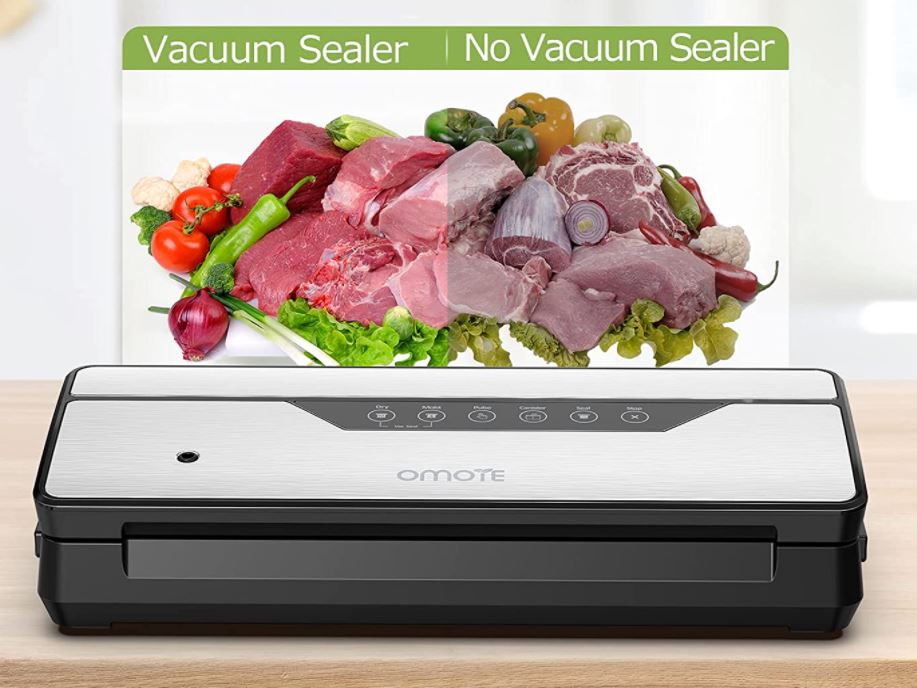
What Foods Can be Vacuum Sealed?
The last thing you want to think about is what types of foods you want to preserve. Not all storage methods are suitable for all foods, and vacuum sealing is no exception. Fortunately, the majority of foods can be vacuum sealed easily, without any issues. Meats, firm fruits, dry goods, and most vegetables can all be sealed as-is. As long as the food will fit in the bag, go ahead and seal them.
That said, there are some exceptions. Certain vegetables need to be blanched before they get sealed. These vegetables include turnips, as well as fructiferous veggies like broccoli, cabbage, cauliflower, and Brussels sprouts. The reason for this is that certain vegetables contain enzymes that will produce off-flavors over time. Blanching will break down these enzymes and keep them from ruining your veggies. To blanch a vegetable, submerge it in boiling water for a few minutes. The exact amount of time depends on the vegetable. Then, immediately immerse it in ice water so it returns to room temperature, and you’re ready to seal.
There are also some foods that can’t be sealed at all. Soft and or unpasteurized cheeses like Ricotta and blue cheese cannot be safely vacuum sealed. The same is true for garlic and mushrooms. The reason is that these foods can contain anaerobic bacteria. Since they can live without oxygen, they can grow inside a vacuum pouch.
As an added note, make sure to seal all foods when they’re at room temperature or cooler. Warm foods can harbor more bacteria, which will reduce your storage life. If you’re sealing food after cooking, put it in the fridge for a few hours first. This will bring it to a cool enough temperature for safe vacuum sealing.
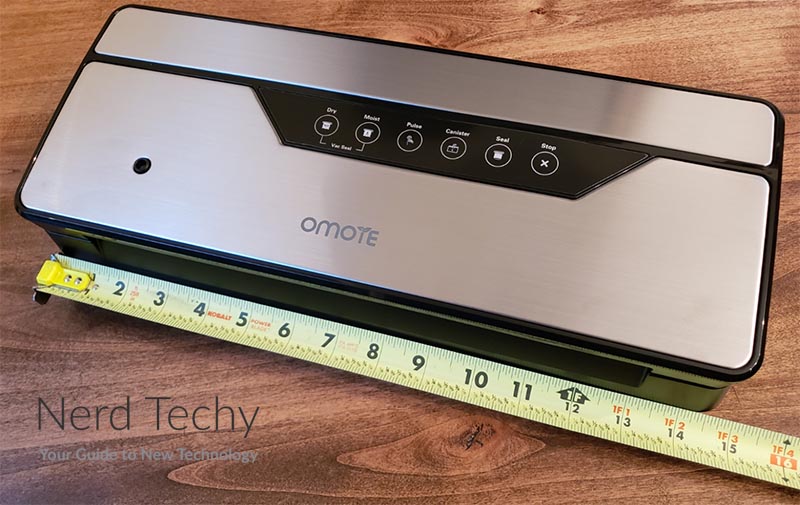
Overall Design
TheOMOTE Vacuum Food Sealeris big and rectangular, with a black ABS plastic housing and a chromed plastic lid. It’s easy to wipe down and keep clean, with a total size of 16.61 inches wide, 7.8 deep, and 4.65 thick. This makes it easy to store away, although it cannot be stood on end due to the buttons on the sides. Even so, you can put it on its back or on its face, and it will sit against the side of the cabinet.
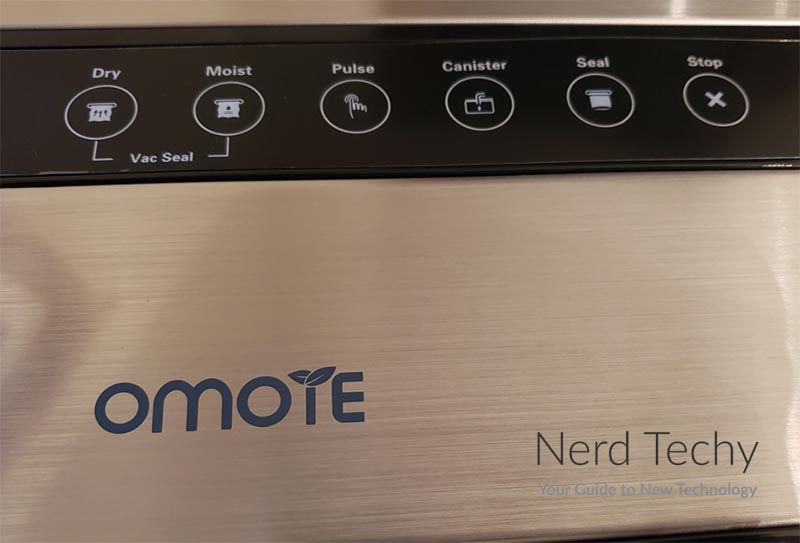
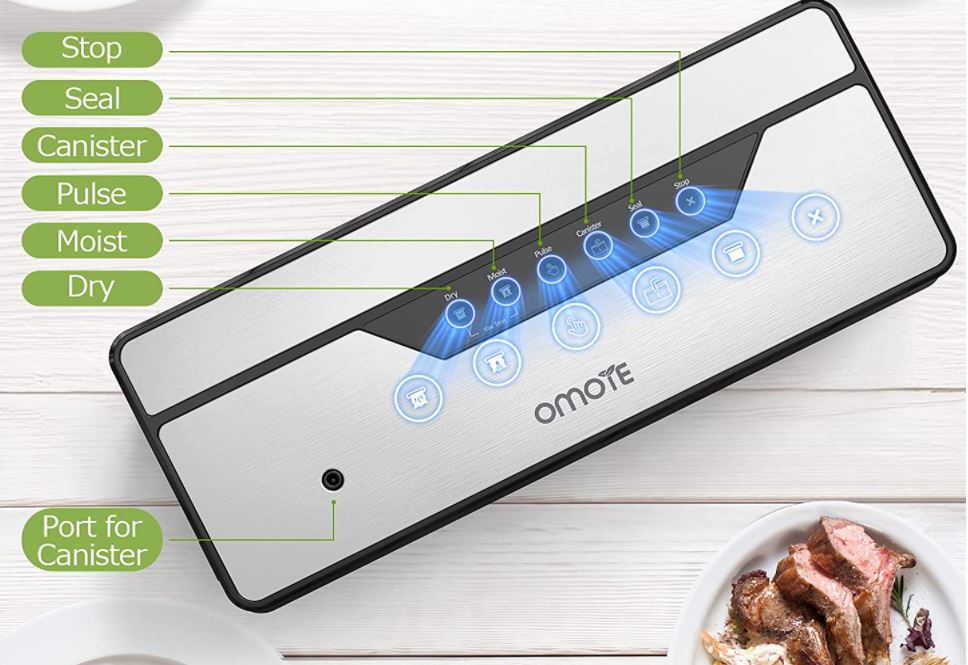
On the top of the housing, you’ll find all the controls. These have a soft touch design, and are easy to use with wet or greasy hands. The first two buttons operate the two automated vacuum modes: dry and moist. The third operates the manual vacuuming function, and the fourth operates the bottling vacuum function. The fifth is a sealing option for two-ended pouches or ones that have been manually vacuumed. The last button is a stop button, which ends whatever the sealer was doing.
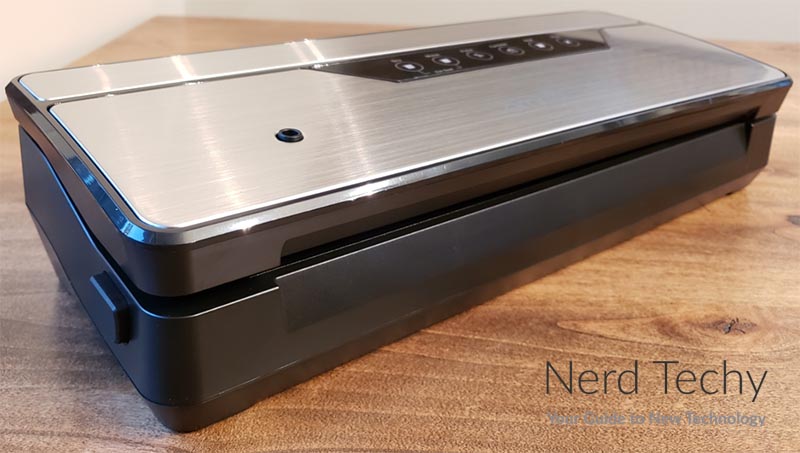
Also on the top of the housing is a small hole, where you can attach a hose for sealing bottles. This is used in tandem with the included accessory hose and the wine cork. You put the cork in the top of an open bottle, run the sealer, and unhook the hose. Your beverage then remains safe from oxidization. This cork will also work as a plug for many popular aftermarket canning and jarring lids.
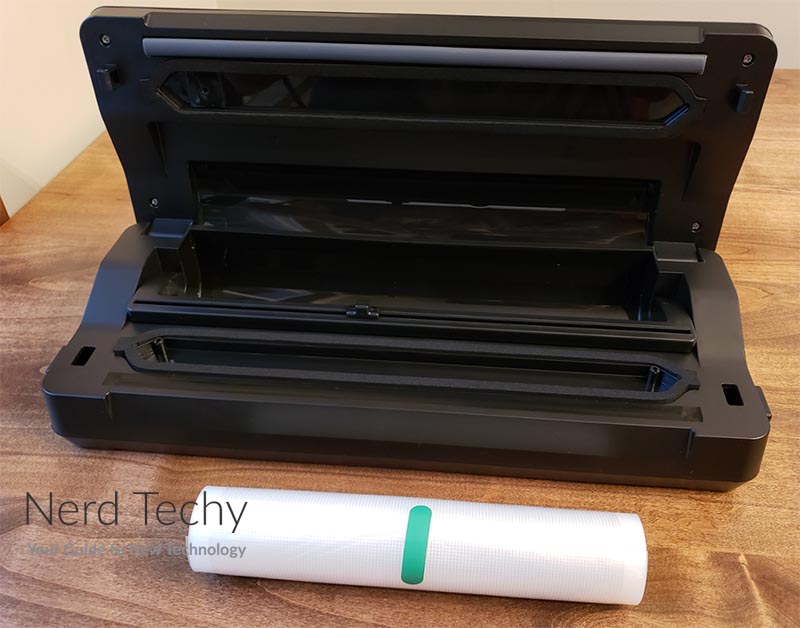
The power supply input is located on the back left corner, and a removable cord is included. On the sides of the housing, you’ll find the two release buttons we briefly mentioned. Press these to access the inner storage compartment. Inside, you’ll have a roll holder, with storage for a 16-foot (5-meter) sealing roll. This isn’t big enough for the world’s largest rolls, but it’s fine for most home users.
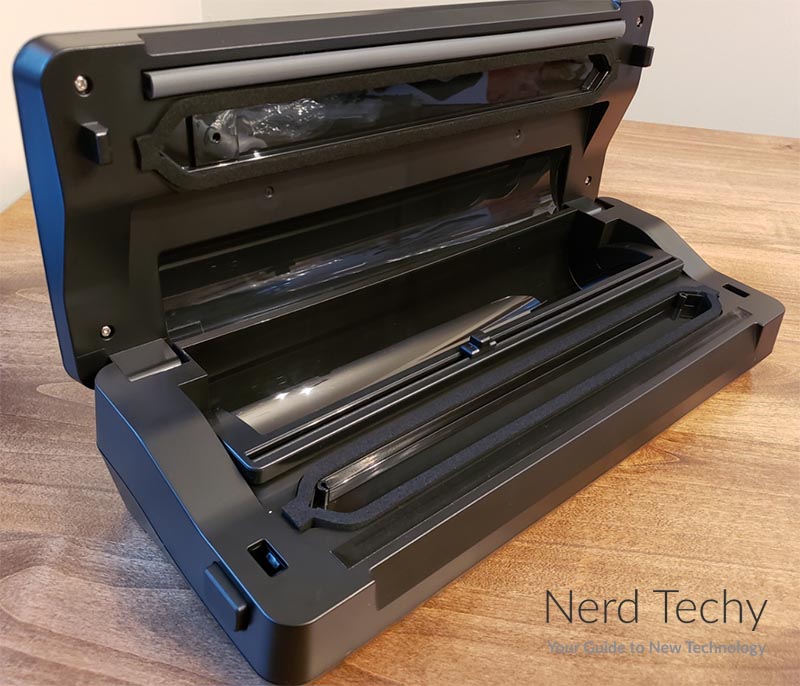
In fact, there’s a five-meter roll included in the package. This is basically a long sleeve that’s open at both ends, and it’s used to create custom pouches. First, you pull the front of the roll under the cutting mechanism. Pull out whatever length you need, leaving about two inches extra for sealing. Then, slide the black cutting mechanism from left to right. This will create a clean cut for the end of your pouch. Now, close the lid, insert either end of your sleeve, and press the seal button. This will seal one end, creating a pouch that’s ready for use.
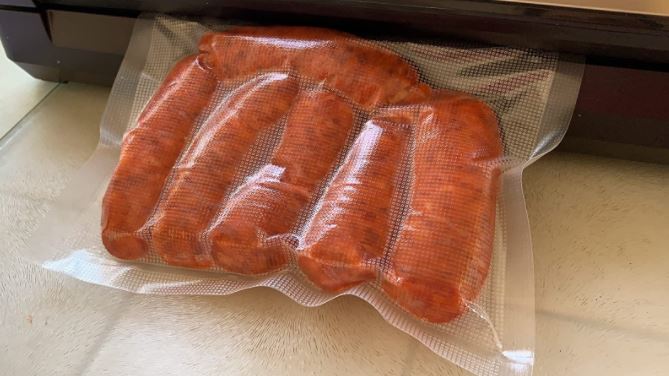
Of course, you can also use a premade bag, up to a maximum width of 11.8 inches. The only caveat is that these need to be proper vacuum sealing bags, with a textured finish. That “texture” is actually thousands of tiny air valves, which let air leave the bag but not enter it. There are five bags included in the kit, and an endless number of aftermarket options available.
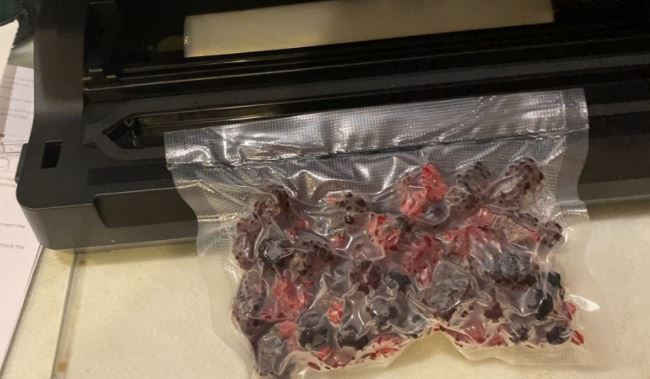
Everyday Operation
使用Omote真空食品密封剂简单明了。首先,准备所有的行李和小袋,准备好食物。打开盖子,然后装满一个行李。确保在顶部留出一些空间,以便密封剂可以完全关闭开口。将袋子的开口端放在真空密封剂开口处,然后拉动侧面,使其平坦。按下盖子直到点击,然后选择密封模式。密封过程将开始,指示灯将打开。当灯熄灭时,您可以打开机器并取出食物。重复必要的尽可能多的袋子的过程。
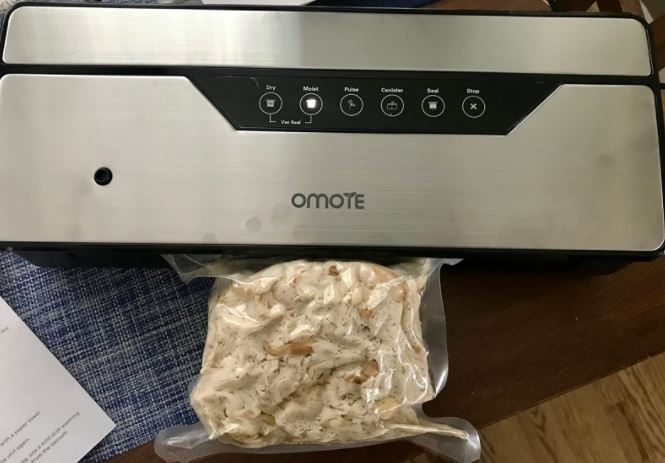
干燥和潮湿的食物模式是自我解释的。干粮模式是干燥的,例如爆米花,干豆和坚果。在这种模式下,真空将尽可能地拉动所有空气。潮湿的食物模式的侵略性降低了。它不会挤压水果和蔬菜,也不会从小袋中吸收牛肉汁。请记住,这意味着“湿润”,而不是“湿”。在将食物密封之前,您仍然应该使食物尽可能干。
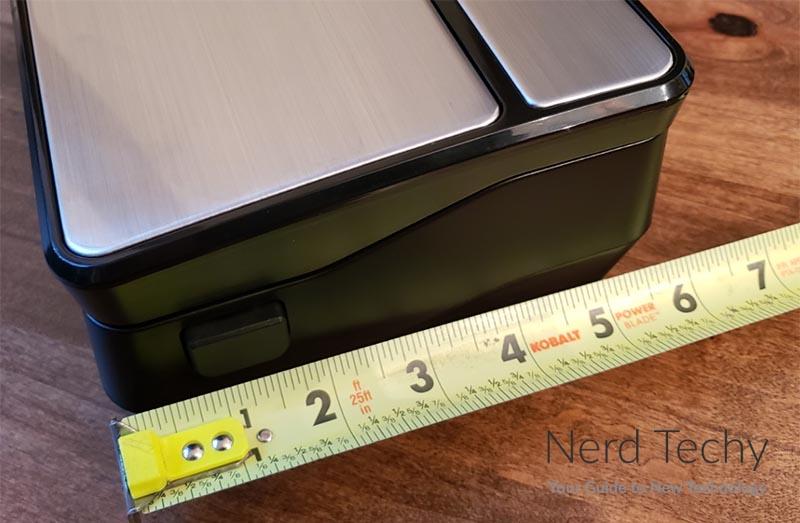
The third option is to use the “pulse” button to manually vacuum out your bag. This is a better choice for delicate foods, like dried fruits, chips, and crackers. When you release the pulse button, the vacuum immediately stops sucking. This way, you remove some air, but you don’t squeeze the bag flat and crush your foods. When you’re happy with the amount of vacuuming, just press the “seal” button to close the pouch.
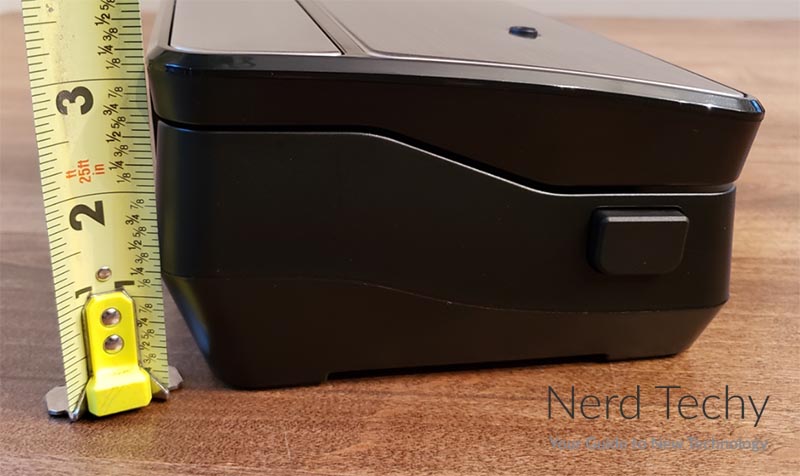
Final Verdict
TheOMOTE Vacuum Food Sealer是将肉和蔬菜保持更长的时间的好方法。这是一种基本的消费者模型,因此一次只能制作5-10个小袋,然后才能冷却。但是,出于大多数家庭使用目的,它将足够强大满足您的需求。它也易于使用,并具有大量的密封模式。借助所有配件,您将获得足够的多功能性来密封几乎所有内容。
Note: At no extra cost to you, we may earn a commission for purchases using our links.Learn more.






Is the plastic used for sealing SAFE if my food is cooled down before sealing?
The plastic is food safe, commercial grade and BPA free. You can seal it without worry.